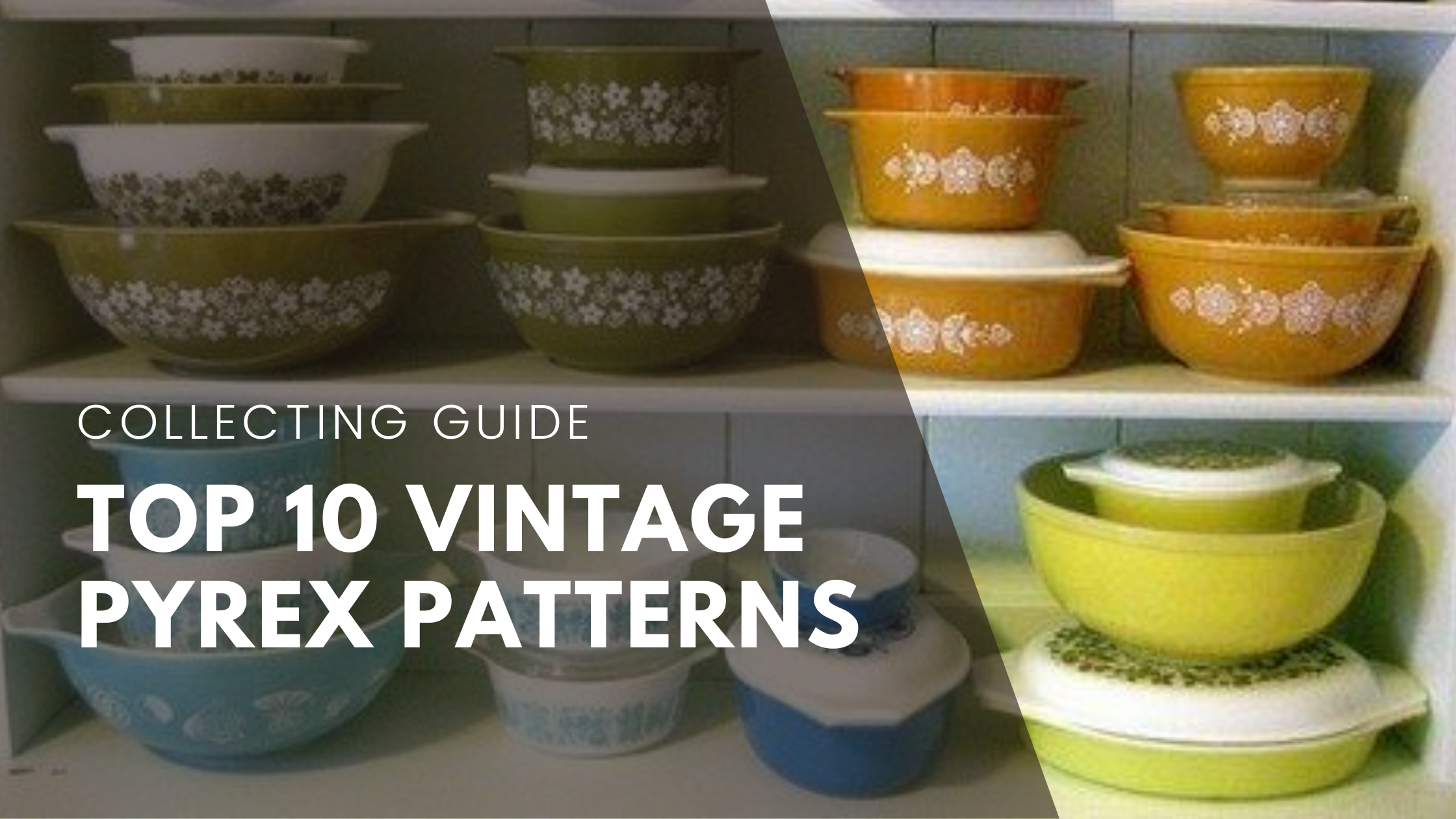Nostalgic Delights: The 10 Vintage Pyrex Patterns That Capture Hearts
Vintage Pyrex is a popular collectible today; there’s quite an active community of vintage Pyrex collectors online, with some showing off their favorite finds on Instagram and others buying and selling rarities on eBay and Etsy, among other sites. Maybe you grew up with a Pyrex-filled kitchen and long to recreate that aesthetic, or perhaps you purchase vintage as an eco-friendly ethic; there are plenty of reasons you might want to find a well-loved bowl or casserole dish. Understanding your motivation for collecting can help you dig through thrift store inventory and web pages until you find the ideal piece.
With hundreds of patterns out there, some are more popular than others. In particular, the patterns of mixing bowls, casserole dishes, and refrigerator sets that come in cheerful colors, such as pink and turquoise, are much more popular with modern Pyrex collectors than the earthy, muted patterns that sold so well in the late 1960s and early 1970s.
Here are some of the hottest patterns and colors among collectors today. Some of these designs are very sought after since they have popular designs and are in minimal supply.
Butterprint – Produced from 1957 to 1968
The Butterprint pattern dates to 1957 and depicts and is distinguished by an Amish farm couple bordered by sheaves of wheat, roosters, and corn stalks. This pattern is also known as “Amish,” “Farmer & Wife,” “Buttercup,” and “Rooster & Corn”. A new product line called “Turquoise” was released in 1963, which included both the Butterprint and Snowflake patterns in white on a turquoise background. The same blue color was used in both product lines. “Multitone Blue” 300-series bowl set was later added to the Turquoise collection.
Gooseberry – Produced from 1957 to 1966
The Gooseberry pattern debuted in 1957. This pattern came in the color schemes, pink on white, white on pink, black on white, and black on yellow. The yellow and black was discontinued in 1962, while the pink and white variation was ended in 1966. Gooseberry is also known as Onion Berries, Leaves and Berries, Acorn, and Grape Leaves.
Rainbow Stripes - Produced from 1965 to 1967
Rainbow Stripes was first introduced in 1965 and was available in round nesting mixing bowls. The sought-after Rainbow Stripe Bowls were initially released in the 300-series Mixing Bowl Set or sold individually by color. Despite coming in four colors, the Rainbow Stripe Bowls Set only had three bowls, as it was sold without the Yellow Stripe Bowl. The Yellow Stripe Bowl could only be purchased separately, not as part of the set. The Rainbow Stripe pattern ended production in 1967. It may also be known as Striped Lines or Alternating Lines.
Dots – Produced from 1969 to 1973
The Dot Bowls is one of the most popular Pyrex patterns. Released in 1968, the first three Dot Bowls came in orange, yellow, and blue, with green added a year later due to the popularity of the pattern. Each bowl was sold separately rather than in a set. The Dot series of bowls has a fun, bold motif that is as modern today as it was then and are occasionally seen on the Food Network.
Terra – Produced from 1964 to 1965
Terra was first introduced in 1964 and is an unusual design for Pyrex. William Curtis designed the matte textured facade to simulate rustic earthenware. Standard Terra items always have a matte brown finish. Terra was the first opal Pyrex pattern released on both ovenware and tableware. Yet even with a combined product release, Terra was only available on a limited number of items. Terra was short-lived, ending production in 1965, as it was challenging to produce, had high production costs, and had a high retail price. The unique matte finish of Terra was also easily scratched and dulled after being cleaned or stored.
Snowflakes – Produced from 1956 to 1967
Snowflake made its debut in 1956 along with Pink Daisy. While Pyrex had produced solid color opalware for many years, Pink Daisy and Snowflake were the first patterned dishes released using their new screen-printing process. Snowflake came in three versions. The longest-running color combination was a white pattern on a turquoise background. However, Snowflake also came in a turquoise pattern on a white background and a white design on a charcoal background. While the white-on-turquoise version ran until 1967, the turquoise-on-white until 1963, and the charcoal version ended production in 1960.
Snowflake Blue – Produced from 1972 to 1975
The release of Pyrex Compatibles in 1972 came with new items, including salt and pepper shakers, a covered butter dish, and a sugar and cream set. Snowflake Blue, Butterfly Gold, and Spring Blossom Green were the first patterns released as Pyrex Compatibles. Snowflake Blue is unofficially known as “Garland” because of its garland-like pattern of snowflakes, swags, and dots. The design came in either blue or white on alternating blue and white backgrounds.
Daisy – Produced from 1968 to 1973
The Daisy pattern released in 1968 in sunburst colors only appears on the 442 and 444 Cinderella mixing bowls, while the remaining bowls and casseroles were solid shades of yellow and orange. Daisy, instead, appeared on the clear glass lids of the dishes until 1972, when the clear lids became opal lids, still with the Daisy design printed on top. Daisy ended production in 1973.
Balloons – Produced in 1958
Unofficially known as 'Balloons,' this design was the first patterned promotional item that came as a chip and dip set. The set comes with the 441 and 444 Cinderella Bowls and a metal bracket that attaches to the large bowl and holds the smaller bowl.
'Balloons' comes in a turquoise background with a white pattern of hot air balloons, a flying bicycle, and a crescent moon. The set came with a suggestion card on how the new chip and dip set might be used. Other than the set for chips and dip, the bowls could also be used for salad and dressing, as a punch bowl, or separately for "mixing, serving, and baking." The 'Balloons' set initially retailed for $3.95 in 1958.
“Eyes” – Production estimated from 1950 to 1959
The patterned "Hot 'N' Cold" Chip and Dip Set were introduced by Pyrex sometime in the 1950s; however, the exact date is unknown. Unofficially known as "Eyes," this pattern was among the first to be released as a Chip and Dip Set. The characteristic Pyrex stamp is only found on some of the Eyes bowls, while others do not have the symbol. A corresponding coffee carafe printed with the "Eyes" pattern in gold was released, and a straightforward one-quart juicer with a turquoise plastic lid.
Vintage Pyrex is a beautiful addition to any kitchen; the vibrant colors and patterns make it even more unique and memorable. Collectors should be aware of the many different prints and colors produced over the years and understand the most popular and desirable patterns since there is something for every collector. Check out our article on tips for displaying your collection for specific tips on displaying your vintage Pyrex collection.


















